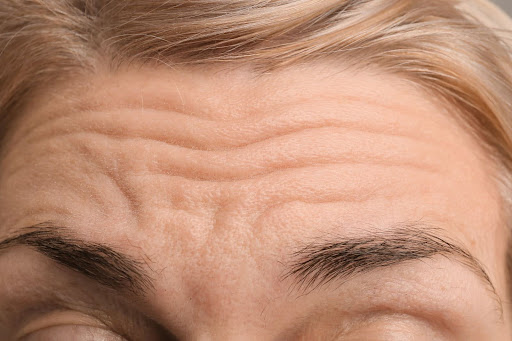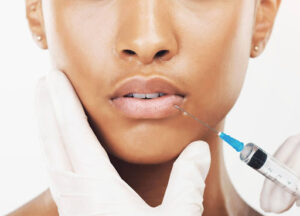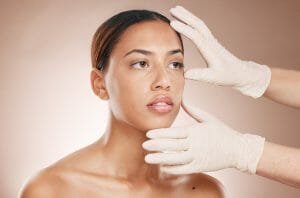Wrinkles are a natural part of aging, but they can often come as an unwelcome surprise. Knowing when wrinkles begin to appear and how to manage them is crucial for maintaining youthful, healthy skin. In this guide, we explain the various factors that influence wrinkle formation, the types of wrinkles you might encounter, and effective strategies for prevention and treatment.
When Do Wrinkles Start Appearing?
The appearance of wrinkles is influenced by a combination of internal and external factors. Typically, the first signs of wrinkles begin to appear in a person’s late 20s to early 30s. These initial wrinkles are often fine lines around the eyes, known as crow’s feet, and the beginnings of forehead lines. As we age, the skin’s natural elasticity and firmness decrease, leading to deeper wrinkles and facial lines.
Types of Wrinkles
Wrinkles are a natural part of the aging process, but they come in different types based on their causes and appearance. Here are the main types of wrinkles:
- Dynamic Wrinkles: These expression wrinkles form due to repetitive muscle movements, such as smiling, frowning, or squinting. Common examples include crow’s feet around the eyes and forehead lines.
- Static Wrinkles: Unlike dynamic wrinkles, static wrinkles are visible even when your face is at rest. They develop due to the loss of skin elasticity, collagen breakdown, and the effects of gravity over time.
- Fine Lines: These are the early stages of wrinkles and are often shallow and small. Fine lines usually appear first around the eyes and mouth and are influenced by factors like sun exposure and dehydration.
- Wrinkle Folds: Also known as deep folds or nasolabial folds, these wrinkles form due to the sagging of the skin. They are commonly found between the nose and mouth and can become more pronounced with age.
- Gravitational Folds: These wrinkles occur as a result of the skin sagging over time, influenced by gravity. They are typically deeper and more prominent, often seen around the jawline and neck.
- Compression Wrinkles: These wrinkles form due to the pressure exerted on the skin during sleep, such as when the face is pressed against a pillow. Over time, these lines can become more permanent, especially on the side of the face where one tends to sleep.
Medispa treatments in Montreal
5 Factors That Influence Wrinkle Formation
Wrinkle formation is influenced by various factors including aging, sun exposure, and lifestyle choices. Understanding these factors is crucial to manage and prevent premature skin aging and maintaining youthful skin.
- Collagen Production and Collagen Levels
Collagen is a key protein in the skin that maintains its strength and elasticity. As we age, the production of collagen decreases, leading to the development of wrinkles. The reduction in collagen levels contributes to the formation of both static and dynamic wrinkles. Static wrinkles are visible even when the face is at rest, while dynamic wrinkles appear due to repetitive facial expressions, such as smiling or frowning.
- Sun Exposure and UV Rays
UV rays from the sun cause sun damage, leading to the breakdown of collagen and elastin fibers in the skin. This results in the appearance of premature wrinkles and skin discoloration, including age spots and dark spots. To protect your skin, it’s essential to use broad-spectrum sunscreen daily and avoid tanning beds.
- Facial Expressions and Repetitive Movements
Facial movements play a crucial role in wrinkle formation. Repetitive expressions, such as frowning or squinting, contribute to the development of dynamic wrinkles. Over time, these repetitive movements create grooves in the skin, leading to prominent signs of wrinkles around the eyes, forehead, and brows.
- Lifestyle Factors and Diet
A balanced diet rich in vitamins and antioxidants can support skin health and minimize the appearance of wrinkles. Foods high in vitamins C and E, as well as those containing hyaluronic acid and omega-3 fatty acids, can help maintain youthful skin. Conversely, a poor diet high in sugars and processed foods can accelerate skin aging and contribute to wrinkle formation. Chronic stress is another factor that can affect wrinkle formation. Stress can lead to increased production of cortisol, which can break down collagen and elastin, worsening the appearance of wrinkles.
- Skin Care Routine and Products
The use of skin care products plays a significant role in maintaining skin health and reducing the appearance of wrinkles. Moisturizers that contain hyaluronic acid help keep the skin hydrated and plump, reducing the visibility of fine lines. Gentle skin care routines and products containing hydroxy acids, such as salicylic acid, can help exfoliate dead skin cells and improve skin texture.
How much is Neuromodulator in Montreal?
Wrinkle Prevention and Management Tips
Sun Protection
One of the most effective ways to prevent premature wrinkles is to protect your skin from UV rays. Use a broad-spectrum sunscreen with at least SPF 30 daily, even on cloudy days. Wearing protective clothing and avoiding excessive sun exposure can further reduce sun damage and the risk of skin cancer.
Healthy Lifestyle and Diet
Maintaining a healthy lifestyle with a balanced diet rich in antioxidants and essential nutrients can promote skin health. Incorporate foods high in vitamins A, C, and E, as well as omega-3 fatty acids, to support collagen production and skin hydration. Avoid smoking and limit alcohol consumption, as these can accelerate skin aging and wrinkle formation.
Skin Care Routine
Adopt a gentle skin care routine that includes cleansing, moisturizing, and exfoliating. Regularly using skin care products with ingredients like hyaluronic acid, retinoids, and peptides can help improve skin texture and reduce the appearance of wrinkles. Make sure you exfoliate regularly to remove dead skin cells and promote cell turnover.
Non-Surgical Treatments
Non-surgical treatments are effective options for reducing wrinkles and enhancing skin appearance without the need for invasive procedures. These approaches address various signs of aging, offering a rejuvenated look with minimal downtime and a focus on achieving natural results.
Non-surgical wrinkle treatments include:
- Laser Skin Resurfacing: This procedure uses laser technology to remove damaged skin and stimulate collagen production, resulting in smoother, more youthful skin.
- Injectable Wrinkle Relaxers: Neuromodulator treatments like Neuromodulator can temporarily relax the muscles responsible for dynamic wrinkles, smoothing out facial lines.
- Dermal Fillers: Fillers such as hyaluronic acid injections can restore volume to areas affected by deep wrinkles and static lines.
Surgical Procedures
For more pronounced wrinkles, surgical options such as brow lifts and facelifts can provide significant improvement. These procedures involve removing excess skin and tightening underlying tissues to achieve a more youthful appearance. Consult with a surgeon to discuss the best options for your specific needs.
Neuromodulator Clinic in Montreal
At Clinique Face MD, we specialize in a range of cosmetic treatments designed to rejuvenate and enhance your natural beauty. Our approach combines cutting-edge techniques with personalized care to address your unique facial and skin concerns. Whether you’re looking to smooth fine lines or achieve a more youthful appearance, we’re here to help you look and feel your best. Our team provides tailored solutions that fit your individual needs and goals!





